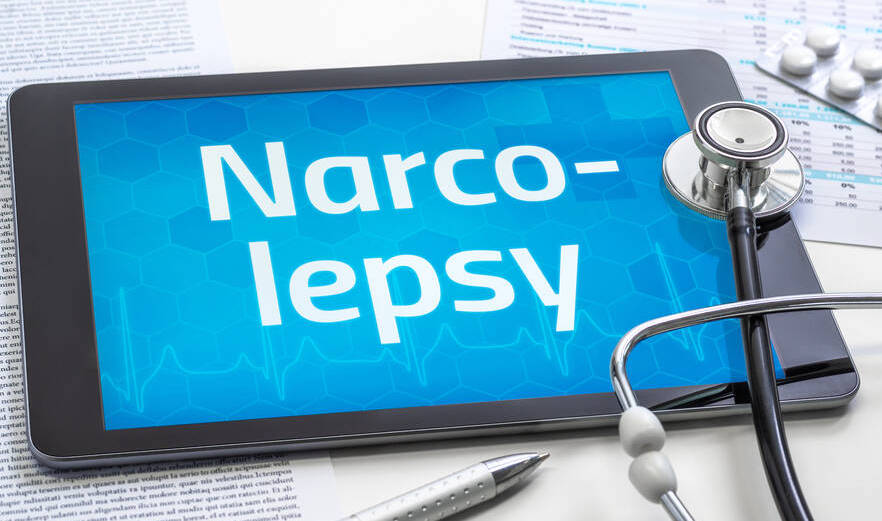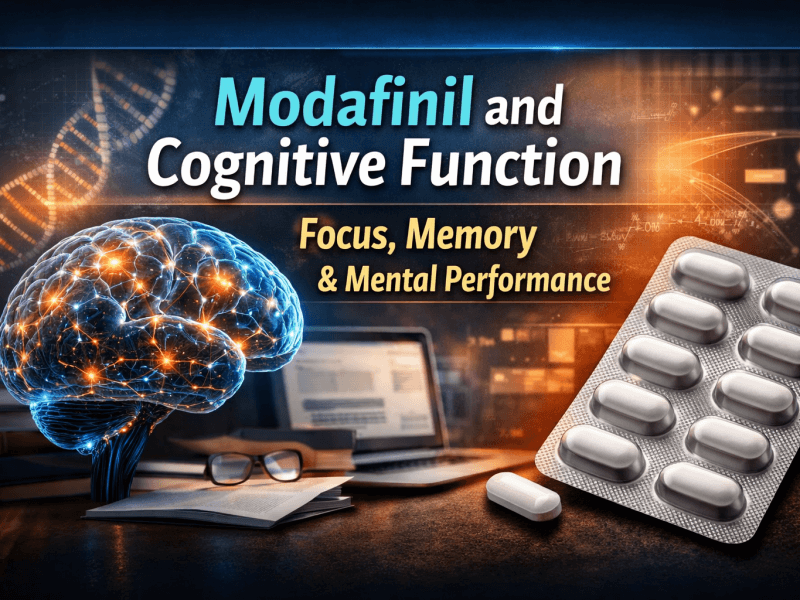Last Updated on 15/09/2025 by James Anderson
Introduction
Narcolepsy is a chronic sleep disorder that affects the brain’s ability to regulate sleep-wake cycles. It causes excessive daytime sleepiness and sudden episodes of sleep, which can significantly impact the quality of life. The main treatment options for narcolepsy are medications that help manage the symptoms, with Modafinil and Pitolisant being two of the most common and effective options. This article delves into these two drugs, comparing their mechanisms, benefits, side effects, and more.
What is Narcolepsy?
Narcolepsy is a neurological disorder that disrupts the body’s normal sleep-wake cycle. It is characterized by an overwhelming need to sleep during the day, despite having adequate sleep at night. People with narcolepsy may experience sudden and uncontrollable bouts of sleep, even in the middle of daily activities. Other common symptoms include cataplexy (a sudden loss of muscle strength triggered by strong emotions), hallucinations, and sleep paralysis.
Overview of Modafinil
Modafinil is a wakefulness-promoting agent that is primarily prescribed to individuals with narcolepsy, sleep apnea, or shift work disorder. It helps reduce excessive daytime sleepiness by increasing certain neurotransmitters in the brain.
1. Modafinil Mechanism of Action
Modafinil works by enhancing the levels of dopamine, norepinephrine, and serotonin in the brain, all of which are associated with alertness and wakefulness. Unlike traditional stimulants, Modafinil does not cause the same degree of euphoria or addiction potential, making it a safer alternative.
2. Benefits of Modafinil in Narcolepsy
- Reduces excessive daytime sleepiness
- Improves cognitive function and focus
- Less potential for abuse compared to traditional stimulants
- Long-lasting effects with minimal crash or rebound sleepiness
3. Possible Side Effects
While Modafinil is generally well-tolerated, some users may experience side effects such as:
- Headaches
- Nausea
- Insomnia
- Anxiety
- Increased heart rate
Overview of Pitolisant
Pitolisant is a relatively newer medication used to treat narcolepsy, specifically targeting excessive daytime sleepiness and cataplexy. Unlike Modafinil, Pitolisant is classified as a selective histamine H3 receptor antagonist, which influences histamine production to promote wakefulness.
1. Pitolisant’s Mechanism of Action
Pitolisant works by increasing histamine levels in the brain, which is a neurotransmitter associated with wakefulness. Histamine plays a crucial role in the regulation of the sleep-wake cycle, and Pitolisant helps optimize this process, reducing the need for excessive sleep during the day.
2. Benefits of Pitolisant in Narcolepsy
- Treats both excessive daytime sleepiness and cataplexy
- Non-sedating, with minimal risk of drowsiness
- Better long-term safety profile for some patients
- Can be used in combination with other medications
3. Possible Side Effects
Pitolisant has a generally favorable safety profile, but some people may experience:
- Insomnia
- Headache
- Nausea
- Anxiety
- Restlessness
Modafinil vs Pitolisant: A Detailed Comparison
1. Effectiveness
Both Modafinil and Pitolisant are effective in reducing excessive daytime sleepiness, but they differ in their specific applications. Modafinil is typically more effective for people whose main issue is sleepiness, while Pitolisant can be a better option for those who also struggle with cataplexy.
| Aspect | Modafinil | Pitolisant |
|---|---|---|
| Effectiveness | Best for sleepiness | Best for sleepiness & cataplexy |
| Side Effects | Headaches, anxiety, insomnia | Insomnia, headache, nausea |
| Mechanism | Dopamine & norepinephrine increase | Histamine receptor antagonism |
| Cost | Generally more affordable | Often more expensive |
2. Side Effects
Both medications have mild to moderate side effects, but their intensity and frequency may vary depending on the individual. Modafinil tends to be better tolerated in terms of mental clarity and cognitive function, while Pitolisant’s side effects are less likely to involve euphoria or over-stimulation.
3. Cost and Accessibility
Modafinil is more widely available and typically more affordable than Pitolisant, which may be a limiting factor for some individuals.
4. Patient Preferences
Patients may prefer Modafinil for its long history of use and established safety profile. However, some may lean towards Pitolisant if they experience problems with Modafinil’s side effects or if they require treatment for both sleepiness and cataplexy.
Who Should Use Modafinil?
Modafinil is typically recommended for people who experience severe daytime sleepiness due to narcolepsy but do not experience significant cataplexy. It may also be suitable for patients who need a long-lasting solution with minimal side effects.
Who Should Use Pitolisant?
Pitolisant may be more appropriate for patients who experience both excessive daytime sleepiness and cataplexy. It can also be a good choice for individuals who cannot tolerate the side effects of Modafinil or need an alternative to traditional stimulants.
How to Choose the Right Treatment for Narcolepsy
When choosing between Modafinil and Pitolisant, the decision should be based on:
- The presence of cataplexy
- Tolerance to side effects
- Cost and accessibility
- Personal preferences and lifestyle factors
Potential Drug Interactions
Both Modafinil and Pitolisant can interact with other medications, particularly those affecting the liver. It is essential to discuss any current medications with a healthcare provider to avoid harmful interactions.
Modafinil and Pitolisant in the Context of Narcolepsy Treatment Plans
While medications like Modafinil and Pitolisant are essential, they are typically part of a broader treatment plan that may include lifestyle changes, cognitive-behavioral therapy (CBT), and proper sleep hygiene. A comprehensive approach can improve overall outcomes.
Modafinil and Pitolisant: Scientific Studies and Research
Several studies have highlighted the effectiveness of both Modafinil and Pitolisant in managing narcolepsy symptoms. Research suggests that Pitolisant, in particular, holds promise in improving both sleepiness and cataplexy in a broader range of patients.
The Role of Lifestyle Modifications in Narcolepsy Treatment
Alongside medication, lifestyle changes such as regular sleep schedules, exercise, and stress management are crucial in managing narcolepsy symptoms. These modifications can help reduce the reliance on medication and improve the quality of life.
Patient Testimonials and Experiences
Many patients have shared positive feedback regarding both Modafinil and Pitolisant. While some prefer Modafinil’s immediate wakefulness-promoting effects, others have found success with Pitolisant, particularly for managing cataplexy alongside daytime sleepiness.
FAQ
1. Which is better, Modafinil or Pitolisant?
Both medications are effective, but Modafinil is typically used for daytime sleepiness, while Pitolisant is better for both sleepiness and cataplexy.
2. Can I use Modafinil and Pitolisant together?
Consult a doctor before combining medications, as interactions could occur.
3. How long does it take for Modafinil to work?
Modafinil typically takes 30-60 minutes to start showing effects.
4. Is Pitolisant safe for long-term use?
Yes, Pitolisant has a favorable safety profile for long-term use, especially for managing cataplexy.
5. Does insurance cover Modafinil and Pitolisant?
Coverage can vary depending on the insurance plan. It’s best to check with your provider.
6. Are there natural alternatives to Modafinil and Pitolisant for narcolepsy?
While medications like Modafinil and Pitolisant are the most effective options for treating narcolepsy, lifestyle modifications, and certain herbal supplements (such as caffeine and ginseng) may provide temporary relief. However, these should not replace prescription treatments.
Conclusion
Narcolepsy is a challenging condition that significantly impacts the lives of those who suffer from it. Thankfully, medications like Modafinil and Pitolisant offer promising treatment options for managing excessive daytime sleepiness and other related symptoms. While Modafinil has a long track record of effectiveness in combating sleepiness, Pitolisant provides a newer approach, particularly for those struggling with both sleepiness and cataplexy.
Choosing between Modafinil and Pitolisant ultimately depends on the individual’s symptoms, response to treatment, and any potential side effects experienced. Working closely with a healthcare provider to tailor the treatment plan is crucial for achieving the best results. By incorporating both medication and lifestyle changes, people with narcolepsy can take proactive steps toward managing their condition and leading a more fulfilling life.
‼️ Disclaimer: The information provided in this article about modafinil is intended for informational purposes only and is not a substitute for professional medical consultation or recommendations. The author of the article are not responsible for any errors, omissions, or actions based on the information provided.
References:
- U.S. Food and Drug Administration. PROVIGIL. U.S. Department of Health and Human Services. https://www.accessdata.fda.gov/drugsatfda_docs/label/2015/020717s037s038lbl.pdf . 2015
- Ballon JS, Feifel D. A systematic review of modafinil: potential clinical uses and mechanisms of action. J Clin Psychiatry. 2006
- Willavize, S. A., Nichols, A. I., & Lee, J. Population pharmacokinetic modeling of armodafinil and its major metabolites. https://doi.org/10.1002/jcph.800 . 2016
- Fuxe K, et al. Modafinil enhances the increase of extracellular serotonin levels induced by the antidepressant drugs fluoxetine and imipramine: a dual probe microdialysis study in awake rat. Synapse. 2005
- Mechanisms of modafinil: A review of current research. nih.gov. 2007
- PROVIGIL (modafinil) Tablets. FDA.GOV. 2010
- Oliva Ramirez A, Keenan A, Kalau O, Worthington E, Cohen L, Singh S. Prevalence and burden of multiple sclerosis-related fatigue: a systematic literature review. 2021.
- Ciancio A, Moretti MC, Natale A, Rodolico A, Signorelli MS, Petralia A. Personality Traits and Fatigue in Multiple Sclerosis: A Narrative Review. Journal of Clinical Medicine. https://doi.org/10.3390/jcm12134518 . 2023
- Mereu, M., Bonci, A., Newman, A. H., & Tanda, G. The neurobiology of modafinil as an enhancer of cognitive performance and a potential treatment for substance use disorders. https://doi.org/10.1007/s00213-013-3232-4 . 2013
- Greenblatt, K., Adams, N. Modafinil. StatPearls Publishing. https://www.ncbi.nlm.nih.gov/books/NBK531476/ . 2025
- Oliva Ramirez A, Keenan A, Kalau O, Worthington E, Cohen L, Singh S. Prevalence and burden of multiple sclerosis-related fatigue: a systematic literature review. https://doi.org/10.1186/s12883-021-02396-1 . 2021.


